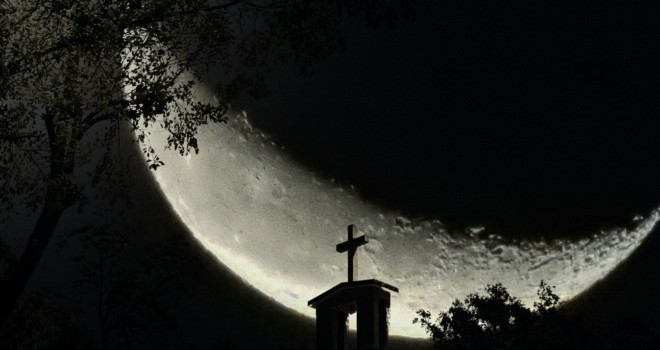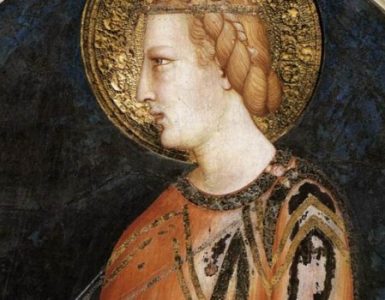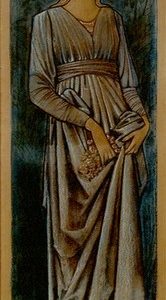This Present Paradise: A Series of Reflections on St. Elizabeth of the Trinity
(Start with part 1 here.)
The visiting American priest bowed his head in prayer before the Blessed Sacrament at the Mother House of the Missionaries of Charity in Calcutta. Suddenly, there was a gentle rustling at his side, and a sister pressed a note into his hand. He unfolded it to see Mother Teresa’s handwriting:
Father,
please pray for me –
Where is Jesus?
Glancing at the tiny nun across the room, he met her intense gaze for the briefest of moments before she turned again to the Blessed Sacrament on the altar.
It was a small glimpse into a vast torrent of pain which the world would never know until St. Teresa’s letters were made public after her death — a momentary window looking into an astonishing darkness which seemed, on the surface, to be nothing but light.
Her writings would expose decades of darkness, startling all of us who assumed—wrongly—that under her luminous simplicity and peaceful, beloved face lived a soul steeped in consolations. What else could move a woman to spend her life serving the poorest of the poor in the most wretched conditions? And yet, now we know that she lived in a near-continuous state of total emptiness and bewildering abandonment. Heaving her heart, again and again, before the Lord in an excruciating state of surrender, trust, and faith, desiring deeply contact with the One who had for so long fallen silent within her.
The woman who seemed to be a living embodiment of the love of God once wrote in a private letter, “Love—the word—it brings nothing.—I am told God loves me—and yet the reality of darkness and coldness and emptiness is so great that nothing touches my soul.”
She was like Mary Magdalene at the tomb, in a sort of blindness, overcome with grief, who gasps between her tears, “They have taken my Lord and I do not know where they have laid Him.” (John 20:13)
“They have taken my Lord and I do not know where they have laid Him.” (John 20:13)
Now, granted, her darkness was exceptional for its depth and duration. No one can compare their interior sufferings with one who was chosen to bear such a cross as a part of her apostolate–in time, she would come to understand her long night as a special gift. But every Christian who has said ‘yes’ to God will know that there is a dimmer switch in God’s hands and that there is a reason that Mother Teresa would write: “If I ever become a saint, I will surely be one of darkness. I will light the light of those in darkness on earth.”
Why do we need a patron saint of darkness?
If we have intentionally set out on the Christian journey of faith, we will find out.
We will pass through beautiful and consoling hours of broad daylight, the muted dusk of aridity, and eventually experience the soft, melancholy fade of twilight. We may hesitate then, unsure of ourselves and of God as the shadows lengthen and obscure our familiar footings. But if we keep going—and we must—we will pass a long purgation and then the evening will inevitably blink into a deeper darkness.
And in the starless center of the spiritual journey the saints tell us to expect something called the “Dark Night.”
After months of aridity (see more on that here), St. Elizabeth of the Trinity would find herself entering a crushing darkness, the place of a soul peering into her own nothingness and encountering only (what feels like) a gaping hole where God should be.
And while she kept it hidden from all but her superiors (her letters to family and friends from the time only mention the cross but not her personal suffering), her interior crucifixion would reach such a state that even her vocation was obscured and all but unrecognizable. Shaken to her core, she once again surrendered her call to the silent voice she had once heard so clearly.
There were human components—as there often are. Summer had turned into a dark and damp winter, the monotony of the rule may have set in along with anxiety about approaching vows, and she struggled with the return of a stifling scrupulosity.
Still, in this case, something else was moving, something divine, a tender hand pressing a precious vine. Vines are always trimmed and pruned in winter so that they can bear fruit in due season. There is no other way to prune a vine- it is an art that must be done by hand and under its touch she remained supple and allowed God, unseen, to continue His deep and delicate work in her soul. She could not see or feel Jesus but she may have heard in his cry a faint echo in her own soul, “My God, my God, why have You abandoned me?”
At its darkest point, a soul in such a place may wonder as it gropes clumsily around for the face of the God it longs for, Does God love me?
And another terrifying thought: Do I love God?
“The impression does not belong to reality. God loves this soul, and the most beautiful proof of His love is that He is drawing it to Himself and binding its whole will. Consequently it is not at all true that this soul does not love the Lord. Quite the contrary! Its love for God is being developed in immense proportions.” (Fr. Gabriel of St. Mary Magdalen, Union with God According to St. John of the Cross)
As awful as it is, though, the darkness of this spiritual state is not an evil but rather a grace. It is a time of visitation—although the Divine Visitor is silent, He is closer than ever. Perhaps it would be accurate to say that He is not the one hidden—but the soul, unknowing, is buried in such a deep embrace it can no longer see the familiar profile of Jesus. It is spending Holy Saturday in a tomb with a hidden Christ who is snapping and breaking thousands of years of bondage.
It is a grace which is given for the ultimate purpose of the human person: union with God, a grace which gets to the very root of our broken nature—every obstacle to union sweetly, painfully, obliterated in this place of purification. The will is unbound and free to make a total gift of itself to God.
“The stains of the old self still linger in the spirit, although they may not be apparent or perceptible. If these are not wiped away by the use of soap and strong lye of this purgative night, the spirit will be unable to reach the purity of divine union.” (St. John of the Cross, The Dark Night, Book 2, Chapter 2)
It is the teachings of the great Carmelite saints John of the Cross and Teresa of Avila which are foundational to the understanding of both the Night and the Union it led to, and so the Church has long looked to them as guides for the interior life. In this respect, St. Elizabeth was entering not only her own spiritual suffering but experiencing fully the very particular charism of her order. No doubt her familiarity with these two spiritual giants and their writings would offer her a degree of comfort. Additionally, her Superior, Mother Germaine, was well-versed in the spiritual writings of these founders and was able to understand something of what her young novice was feeling, to take it in stride and not see it as necessarily an obstacle to her vocation. (It was, in fact, perhaps a confirmation of it.)
“The saints offer us precious insights which enable us to understand more easily the intuition of faith, thanks to the special enlightenment which some of them have received from the Holy Spirit, or even through their personal experience of those terrible states of trial which the mystical tradition describes as the “dark night.” Not infrequently the saints have undergone something akin to Jesus’ experience on the Cross in the paradoxical blending of bliss and pain.” (Pope John Paul II, Novo Millennio Ineunte, 27.)
But not everyone would understand.
The Dominican priest who had given Elizabeth direction even before she entered, Fr. Vallee, was unfamiliar with the Carmelite spiritual teachings and did not recognize the Night as such. He saw her lack of joy and troubled spirit as signs that her community was being too harsh and exacting. Upset, he refused to see her anymore for direction. And she limped her way toward her final vows, suffering greatly.
Can you imagine the added degree of distress this apparent rejection would have caused? Spiritual directors—and really, all of us with any interest in the spiritual life—must have some degree of familiarity with the mystical reality of the Dark Night. Suffering souls can rarely see it for what it is in their inner loneliness, and a word of comfort and understanding can go a long way in soothing a raw spirit.
It is, admittedly, a difficult subject, and as elusive as a butterfly at midnight. And in the end we are reduced to wholly inadequate analogies that cannot begin to explain what it both painful and at the same time a gift beyond imagining. It is a paradox, but it is real, and all of us will walk in some degree of darkness in our lives. If we’ve given ourselves to Jesus, the darkness can be a sacred place, sanctified by the silence of God—and our surrender to Him of even our holiest desires.
To be in love and yet not to love, to live by faith and yet not to believe. To spend myself and yet to be in total darkness. – St. Teresa of Calcutta
St. Teresa of Calcutta, pray for us in our times of darkness.
Photo by Thomas Kinto on Unsplash
This article originally appeared on SpiritualDirection.com and is reprinted here kind permission. You can find more articles from Claire Dwyer by clicking here.












